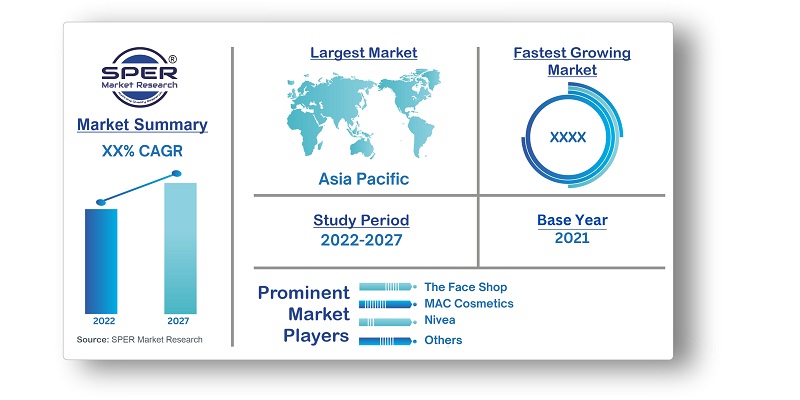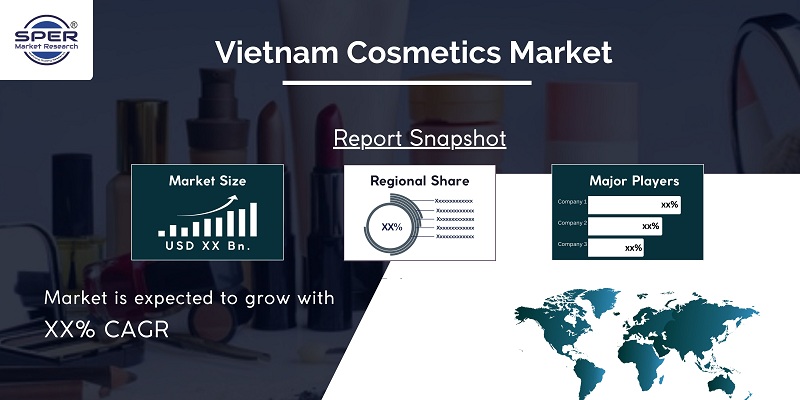
Vietnam Cosmetics Market Growth, Revenue, Trends, Demand, Future Outlook 2022-2027
Vietnam Cosmetics Market by Product Type (Hair Care, Skin Care, Bath and Shower Products, Makeup & Color Cosmetics Products, Fragrances & Deodorants), By Distribution Channel (Beauty Parlors/Salons, Multi Branded Retail Stores, Online Channels, Supermarkets/Hypermarkets, Exclusive Retail Store, and Others), By Gender (Men and Women) and By Region (North Vietnam, Central Vietnam, South Vietnam)
| Published: Jul-2021 | Report ID: FOOD2119 | Pages: 1 - 120 | Formats*: |
| Category : Food & Beverages | |||


1.1. Market Modelling1.2. Product Analysis1.3. Market Trend and Economic Factors Analysis1.4. Market Segmental Analysis1.5. Geographical Mapping
2.2. Data Acquisition2.3. Refining of Data/ Data Transformations2.4. Data Validation through Primary Techniques2.5. Exploratory Data Analysis2.6. Graphical Techniques/Analysis2.7. Quantitative Techniques/Analysis2.8. Visual Result/Presentation
4.1. Supply Chain Analysis4.2. Economic Factor Analysis4.2.1. Drivers4.2.2. Trends4.2.3. Opportunities4.2.4. Challenges4.3. Technological Landscape4.4. Competitors & Product Analysis4.5. Policy & Regulatory Framework4.6. Company market share analysis, 20184.7. Porter’s Five forces analysis4.8. New Investment Analysis4.9. PESTEL Analysis
5.1. Vietnam Cosmetics Market Size & Forecast, 2016-20275.1.1. Demand5.1.1.1. By Value (USD Million)5.1.2. Consumption5.1.2.1. By Volume (Million Units)5.1.3. Supply/Production5.1.3.1. By Volume (Million Units)5.2. Vietnam Cosmetics Market Share & Forecast,2016-20275.2.1. By Product Types5.2.1.1. Hair Care5.2.1.2. Skin Care5.2.1.3. Bath and Shower Products5.2.1.4. Makeup & Color Cosmetics Products5.2.1.5. Fragrances & Deodorants5.2.2. By Distribution Channel5.2.2.1. Beauty Parlors/Salons5.2.2.2. Multi Branded Retail Stores5.2.2.3. Online Channels5.2.2.4. Supermarkets/Hypermarkets5.2.2.5. Exclusive Retail Store5.2.2.6. Others (Drug Stores, General department stores etc.)5.2.3. By Gender5.2.3.1. Male5.2.3.2. Women5.2.4. By Region5.2.4.1. North Vietnam5.2.4.2. Central Vietnam5.2.4.3. South Vietnam
6.1. Company Description6.2. Financial Analysis6.3. Key Products6.4. Key Management Personnel6.5. Contact Address6.6. SWOT Analysis6.7. Company Profiles6.7.1. O-Hui6.7.2. Pond’s6.7.3. Nivea6.7.4. Shiseido Company, Limited6.7.5. The Face Shop6.7.6. Maybelline6.7.7. Rohto6.7.8. Innisfree6.7.9. 3CE6.7.10. MAC Cosmetics6.7.11. Chanel S.A6.7.12. Other Prominent Players
SPER Market Research’s methodology uses great emphasis on primary research to ensure that the market intelligence insights are up to date, reliable and accurate. Primary interviews are done with players involved in each phase of a supply chain to analyze the market forecasting. The secondary research method is used to help you fully understand how the future markets and the spending patterns look likes.
The report is based on in-depth qualitative and quantitative analysis of the Product Market. The quantitative analysis involves the application of various projection and sampling techniques. The qualitative analysis involves primary interviews, surveys, and vendor briefings. The data gathered as a result of these processes are validated through experts opinion. Our research methodology entails an ideal mixture of primary and secondary initiatives.



Frequently Asked Questions About This Report
PLACE AN ORDER
Year End Discount
Sample Report
Pre-Purchase Inquiry
NEED CUSTOMIZATION?
Request CustomizationCALL OR EMAIL US
100% Secure Payment






Related Reports
Our Global Clients
Our data-driven insights have influenced the strategy of 200+ reputed companies across the globe.




















